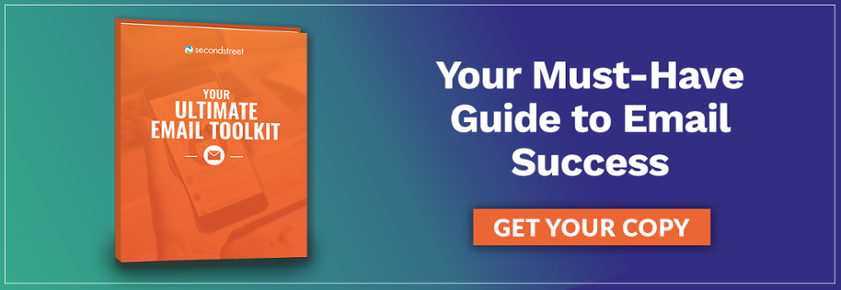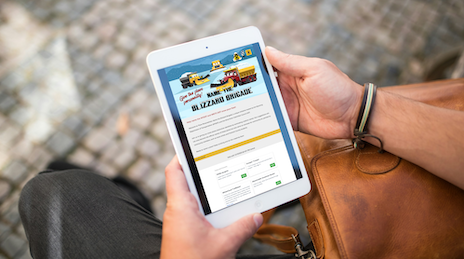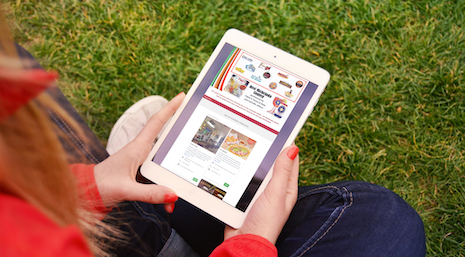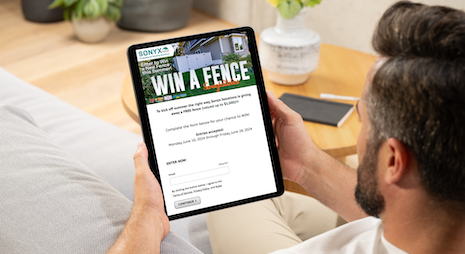Case Study Highlights
- Daily updates for two weeks
- Over 3,000 subscribers
- 53% open rate
- 264% email list growth
The Idea
The Anchorage Daily News is a 28,000 circulation paper out of Anchorage, Alaska. One of the state’s biggest events is the Iditarod Trail Sled Dog Race. This is an annual long-distance sled dog race from Anchorage to Nome, entirely within the state of Alaska.
When we launched our Iditarod email newsletter in 2018 it was, essentially, a daily list of our latest Iditarod stories pulled from an RSS feed. This year, after experimenting with a pop-up, short-term newsletter for a series we did in the fall, we wanted to know if a curated daily newsletter could yield better engagement results.
We were in the middle of a push to revamp how we do our newsletters and wanted to test the industry trend of limited-series newsletters. The Iditarod usually lasts around fifteen days, with a winner declared in eight or nine days. It seemed to be an ideal coverage area where we could experiment with different approaches without having a long-term commitment.
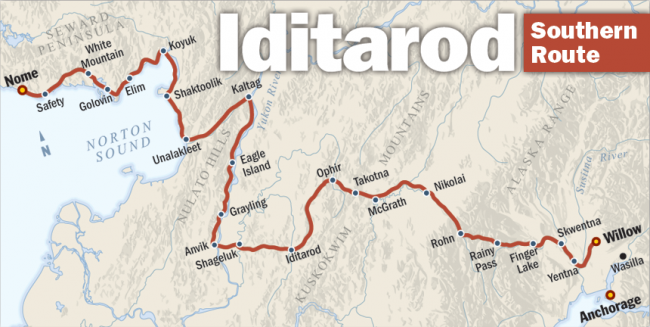
We set four goals for the campaign:
- 50% growth in the number of Iditarod newsletter subscribers
- Above-average open rates compared to our other newsletters
- Above-average click rates compared to our other newsletters
- One hour (or less) a day spent on newsletter production
The Execution
We embedded the newsletter sign-up widget at the bottom of every Iditarod story and encouraged sign-ups on social media. Four days before the race kicked off, we launched a sweepstakes contest: Users who signed up for our newsletter were entered to win a print of one of our staff Iditarod photos. We promoted the giveaway in ads on our site which drove 323 sign-ups for the newsletter.

Our newsletter coverage ran from Feb. 25 to March 20, and we sent daily updates from March 1-13. Each daily email consisted of a three or four-paragraph introduction, a list of blurbs with links to different stories, multiple photos from the race, and a reader Q&A.
The content of the pop-up newsletter itself was really strong. We were telling unique stories and capturing images/video from the trail that none of our competitors would have. Our editorial team wrote the newsletter in a voice very different from our traditional institutional one.
We devoted a section of the newsletter to answering reader questions submitted through a form on our site. That (plus some behind-the-scenes tidbits) was content exclusive to the newsletter that wasn’t posted anywhere on our website.
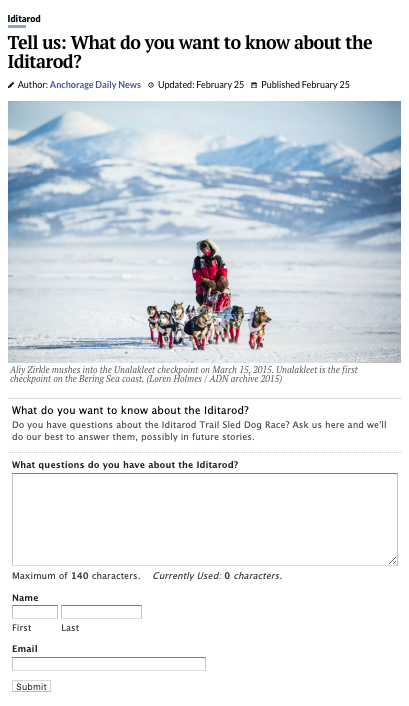
We tried to send out the newsletter around midday, highlighting freshly published stories. Knowing that many Iditarod readers don’t live in Alaska, we strove to send emails at a time that would reach as many people during the daytime as possible.
Our decision to produce a curated Iditarod newsletter this year came pretty late in the planning process, and we weren’t able to find a sponsor for it in time. We would love to have a local business sponsor the Iditarod newsletter next year. The audience is there, and they’re highly engaged and invested in our coverage.
The Results
What happened with our 2019 Iditarod newsletter far surpassed our expectations. In just the two weeks the newsletter ran, it was our highest-engaged newsletter, with an average open rate of 53% and an average click rate of 19%. It generated about 16,000 website sessions, and users who visited our site through the newsletter on average had a lower bounce rate, longer average session time, and higher pages/session average than all site users overall.
Newsletter production did exceed an hour per day, but as we were able to do it in pieces throughout the day, the impact was manageable.
We started with a list of 979 newsletter subscribers carried over from last year’s feed-driven newsletter. We ended with 3,563 subscribers after the 2019 race was over. That’s an increase of 2,584 subscribers, or 264% growth, over the course of a month.

As we prepare for our Iditarod newsletter campaign next year, we already have plans to improve. We’re planning on doing more to promote the newsletter before the race begins and collect more reader suggestions and questions in advance. We also plan to leverage more cross-promotion between newsletter audiences.
After we launched this year’s Iditarod pop-up newsletter, it really felt like we had created our own Iditarod super fan community, and it was a pleasure to be part of the conversation.
